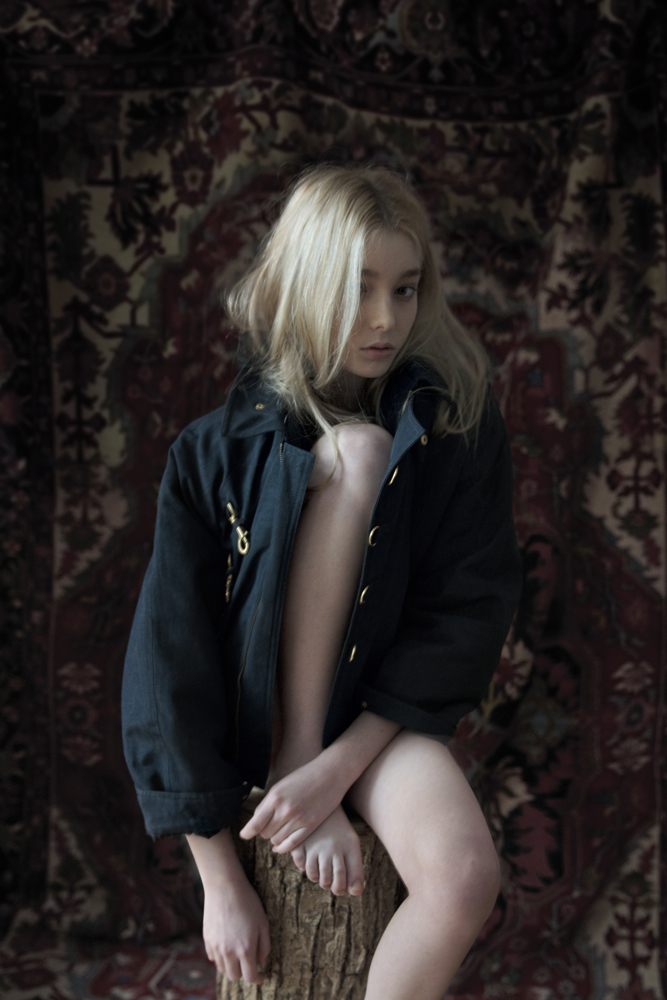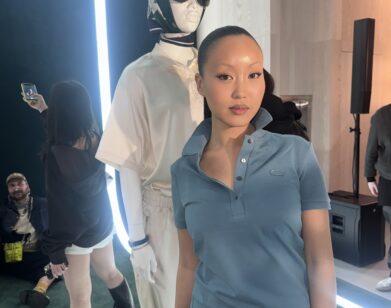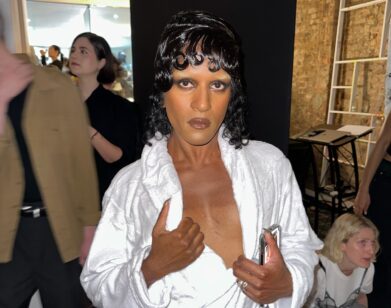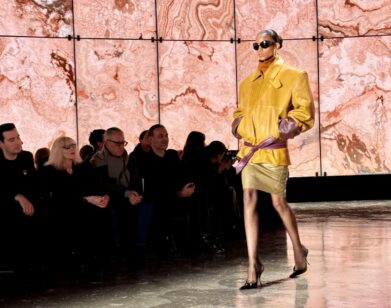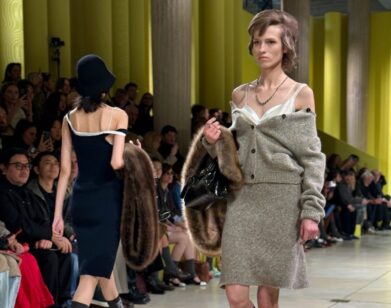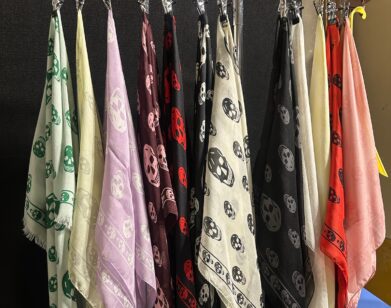Glenn Martens Is Primitive, Not Simple
“There’s nothing simple about my clothes,” says Glenn Martens, the 28-year-old Belgian designer who launched his eponymous line of womenswear this year during Paris Fashion Week. “But when you wear them, you won’t look like some kind of crazy person,” he laughs. The designer’s architectural breakout collection may be devoid of frills and thrills, but there’s indeed nothing simple about the intricate pleats, strong lines or cleverly placed zippers on Martens’ voluminous jackets, skirts and trousers. And the designer’s minimal approach to elegance, unexpected fabric choices and couture-level attention to detail, which he learned from Jean Paul Gaultier (more on that later), exemplify a refined approach to easy, feminine dressing.
Martens is heavily influenced by his hometown of Bruges, which, once a medieval metropolis, is half stuck in the past and half overrun by modern tourism. “It’s a very interesting duality because you live in the elegance of this old city, but then there’s all these neon lights and Christmas shops that are open twelve months a year,” explains the designer. “But there’s this melancholy and this sense of something ugly that’s become beautiful, and I tried to express that in my collection.”
Eerily cool with his rock star good looks, razor sharp jaw, scruffy beard and an antique earring (an heirloom from his great grandmother), the Paris-based designer recalls that he was seven-years-old when he first encountered high fashion. “I saw a Mugler haute couture dress made entirely out of feathers in one of my mother’s magazines. It was crazy.” However, despite his young eye for couture, Martens went on to study languages and interior architecture. “Growing up in a small provincial town like Bruges, I was never aware that “fashion designer” was a job.”
It was on a whim that Martens applied to the prestigious fashion program at Antwerp’s Royal Academy of Fine Art. Not only was he accepted, but he finished at the top of his class and was instantly scooped up by Jean Paul Gaultier after graduation. “Something I really learned from Gaultier is the feeling of handcrafted couture. I was doing pre-collection and the men’s collection, but in those last few weeks before the couture show, everybody works on it. And it’s amazing to be on a team working on all these handmade things,” he says, adding, “This approach to design is very important because handcrafted pieces are closer to art than fashion. Things done by hand have so much more emotion and personal energy. And I learned that from Gaultier.”
Martens, who also worked with independent designer Yohan Serfaty before launching his own line, placed a strong focus on solidifying his identity in his debut collection. “This collection marks the beginning of my identity, so I dissected my personal tastes—everything I love, from art to music to movies—and everything seemed to point back to the city where I grew up.” Bruges’ Gothic architecture is apparent in the strict lines of Martens’ wool, silk and cashmere collection. His layered looks and elongated silhouettes are effortless, despite their often intricate construction. For example, his pants are flat in the front, but create the illusion of a perky posterior via skillful nips and tucks. “Everybody has to have a nice butt,” Martens says with a grin.
Bruges’ abovementioned high/low duality appears in a play on hard and soft—boxy tops and trousers vs. stern but fluid frocks—and seemingly contrasting combos, like an organza dress with a thick elastic drop waist, or the platform trainers that he pairs with each look. Martens’s muted palette of grey, midnight, powder blue and bone was inspired by the art of the Flemish Primitives, specifically Hans Memling, for whom the designer developed an affection at the age of 10 when he viewed a retrospective of his work. And his knack for subtle details, like smartly placed slits that hint at sensuality, or the brass clasps on a moiré bomber jacket, which were sourced from a metalsmithing shop that once catered to the royalty of Versailles (“They’re buckles of the king!” he jokes), is decidedly impressive for a first collection.
Most important for the designer, however, is creating looks that allow the woman to shine through. “Clothes have to be comfortable but creatively, I think it’s very important that the woman comes out. That’s why I like to work with vertical lines because they create an elegance that leads up to the face. You see the smile of the girl who’s wearing the clothes,” he says, noting that his fall woman is one with many secrets. He pauses for a chuckle. “But every woman has secrets, so really, my fall woman could be anybody.”

